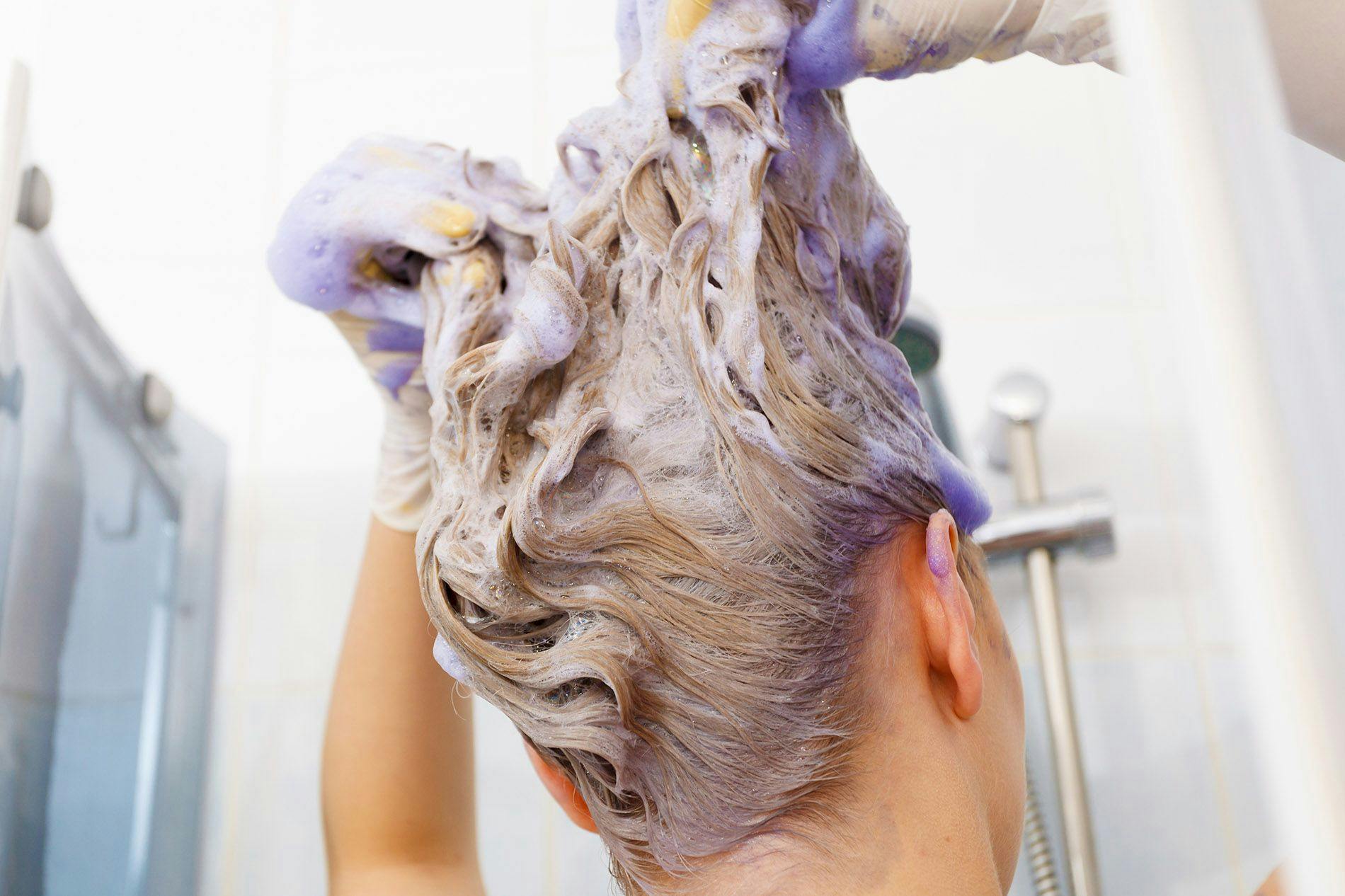Purple shampoo and blue shampoo exist for one purpose – to neutralize unwanted tones from hair.
Specifically, these shampoos eliminate warm, undertones in colored hair – usually hair that has been lightened. This is necessary to help maintain the salon color treatment because of how your natural hair color works.
In it’s natural state, your hair contains different types of melanin. People with black or brunette hair have large amounts of a pigment called eumelanin (which contains iron giving the hair a warm tone when it is lightened) in their hair. Natural blond hair has some eumelanin, but considerably less. During the lightening process the cuticle layer of the hair is opened, while the chemicals penetrate the cortex. The cortex is the natural and artificial melanin live. The lightening chemicals eat away at these melanins leaving behind, at times, an unwanted warm tone,
Different Color Hair Has Different Brassy Tones
For people with black or brown hair, the warm or brassy undertones are orange and red. If you normally have blond hair, and you have colored your hair platinum or silver, the warm undertones will be yellow.

This also applies if you have highlights in or an ombre effect in your hair. The salon coloring can fade, because your hair loses some of the pigmentation.
This is where purple and blue shampoo come into the picture to help reduce the brassy hair tones.
The blue and purple shampoos add the bluish pigments back into your hair, evening out the loss of the blue molecules from the salon coloring. This reduces the warm and brassy undertones and extends the lifespan of your color treatment.
Purple Shampoo vs Blue Shampoo
The reason for these pairings is in the color wheel. Since warm tones for brunette hair are normally orange or red, the opposite color from orange on the color wheel is blue. For people with blond hair, the warm tones are yellow, and purple is opposite on the color wheel from yellow.
Each of these shampoos do essentially the same thing: neutralize brassy tones leaving color-treated hair looking more blond.
Who should use purple or blue shampoo?
Both purple and blue shampoos are used to color correct dyed, color-treated, or lightened hair.
If you have lightened your hair from brunette to blond, use a blue shampoo to balance the reddish tones. Similarly, if you have lightened your hair from blond to platinum, or if you have colored your hair to gray or silver, use a purple shampoo to counteract the yellowish undertones.
When should you use a blue or purple shampoo?
Always follow manufacturers instructions. Typically, you would use a purple or blue color-correcting shampoo after about four weeks. This is when salon lightened hair tends to regain brassy tones, due to sunlight exposure, heat treatment, washing your hair, and natural degradation of the color treatment.
Ask your hair stylist or cosmetologist for their advice on how often to cycle in a blue or purple shampoo. Many people use a purple or blue shampoo until they achieve the desired color, then switch to every other time they wash their hair.
Other benefits of using a purple of blue shampoo
Many color-correction shampoos help moisturize and condition the hair. This is a vital part of maintaining color-treated hair, as lightened hair needs extra conditioning. Remember that the hair strands are chemically treated in order to lighten and color them. The outer membrane of the hair strands are opened up to remove the natural pigment and add the salon color, and bond the pigments to the hair cortex.
Want to Learn More About Cosmetology?
If professional cosmetology is a career you want to pursue, our Admissions team can help you schedule a virtual tour of our Sacramento campus, and the Paul Mitchell Cosmetology program at Campus. Click the link below to get more information and take the first step towards a rewarding career in cosmetology.

